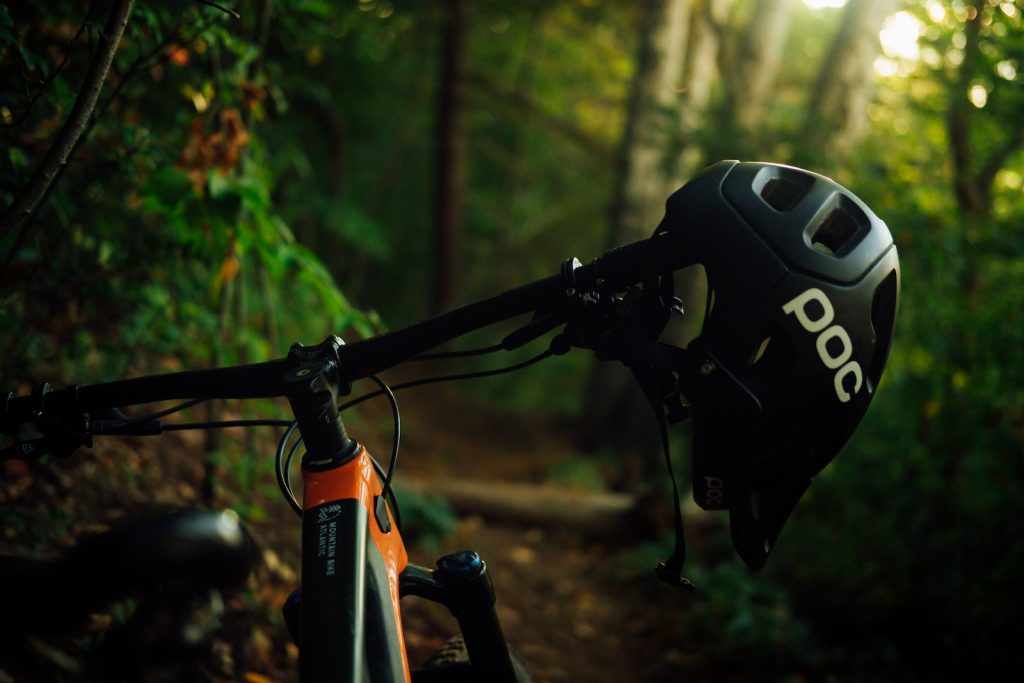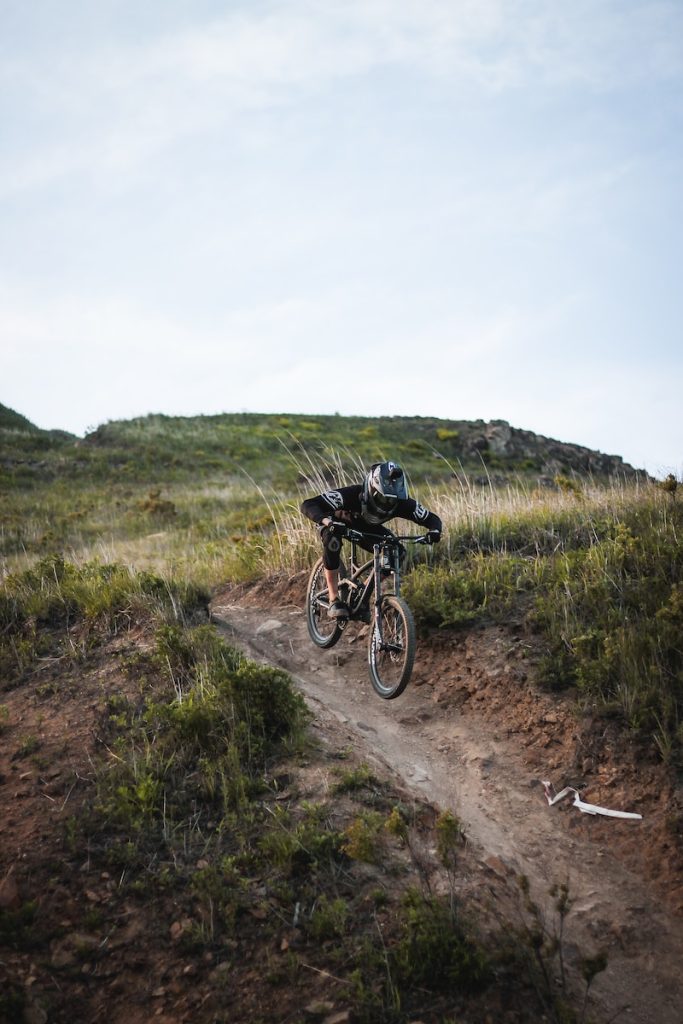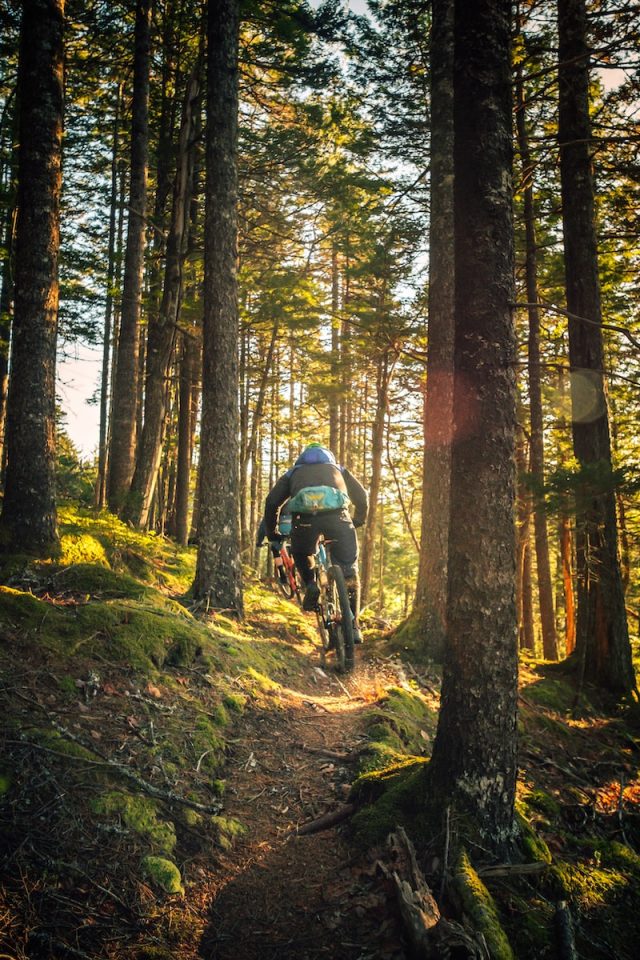Mountain biking is a thrilling and adventurous sport that allows riders to explore the great outdoors while getting an adrenaline rush. However, navigating through the trails can be daunting and overwhelming for beginners. That’s why we have compiled this comprehensive guide to help you start your mountain biking journey. This guide will share tips and tricks on navigating trails, choosing the right gear, and improving your skills. So, whether you’re a complete newbie or looking to refine your skills, this guide will provide you with all the information you need to confidently hit the trails. Let’s dive in!
Basics for Gear and Safety

When it comes to mountain biking, having the right gear and taking necessary safety precautions are crucial. As someone who has been mountain biking for a while now, I’ve learned the importance of having quality gear and prioritizing safety.
First and foremost, investing in a good quality helmet is a must. A helmet is the most important piece of gear that can protect your head from injuries in case of a fall or collision. A helmet that fits comfortably and is specifically designed for mountain biking is recommended.
Next, wear appropriate clothing that provides both comfort and protection. Opt for moisture-wicking and breathable fabrics that can keep you dry and cool during your ride. Padded shorts and gloves can also provide extra comfort and prevent blisters and chafing.
Aside from personal protective gear, it’s important to ensure that your bike is in good condition before hitting the trails. Regularly check your brakes, tires, and suspension to ensure they function properly. A well-maintained bike can prevent accidents and make for a more enjoyable ride.
Finally, always follow safety protocols when riding. Always ride within your skill level and be aware of your surroundings. Yield to other riders and hikers; never ride alone in remote areas. It’s also a good idea to carry a first aid kit, a mobile phone, and extra water and food in case of an emergency.
Investing in quality gear and prioritizing safety gives you a fun and safe mountain biking experience.
Developing Mountain Biking Skills
Developing mountain biking skills can be a fun and rewarding process, but it also takes time and practice. As someone who’s been mountain biking for a while, I’ve learned a few tips and tricks that have helped me improve my skills on the trails.
First and foremost, it’s important to start with the basics. Learning the correct body position and balance is crucial to riding smoothly and efficiently. Practicing on flat and easy terrain can help you get comfortable with these fundamental skills.
Once you feel comfortable with the basics, it’s time to start tackling more challenging trails. It’s important to increase the difficulty level of the trails you ride gradually so you don’t get overwhelmed or discouraged.
One key skill to master is cornering. The proper cornering technique can help you maintain your speed and control tight turns. Practicing on flat ground or gentle corners can help you perfect your technique before attempting more challenging turns.
Another important skill is braking. Knowing when and how to apply your brakes can greatly impact your riding experience. Be sure to use both your front and rear brakes in the appropriate situations and avoid slamming on them suddenly, as this can cause you to lose control.
Finally, don’t be afraid to seek help or advice from more experienced riders. Joining a local mountain biking club or taking lessons from a professional can be a great way to learn new skills and gain confidence on the trails.
In summary, developing mountain biking skills takes practice, patience, and a willingness to learn. By starting with the basics, gradually increasing the difficulty level, and seeking advice from experienced riders, you can improve your skills and enjoy the exhilarating experience of mountain biking to the fullest.
Finding the Right Trail

Finding the right trail for your mountain biking adventure is crucial to having a safe and enjoyable ride. As someone who’s explored many trails, I’ve learned a few tips for finding the perfect trail.
First and foremost, it’s important to consider your skill level and fitness level. Choose a trail that’s within your abilities and fitness level to avoid getting overwhelmed or exhausted. Be honest with yourself about your skills, and choose a challenging but not too difficult trail.
Next, consider the trail’s technical difficulty. Different trails have varying levels of technical difficulty, including rocky terrain, steep hills, or tight turns. Make sure to choose a trail that matches your technical skill level and comfort level.
It’s also important to consider the trail’s location and accessibility. Choose a trail within a reasonable driving distance with adequate parking facilities. Check the trail’s website or contact the local park or authority to ensure the trail is open and accessible during your visit.
Finally, consider the scenery and surroundings of the trail. Mountain biking is not just about the ride; it’s also about the experience of being in nature. Choose a trail that offers beautiful views, exciting terrain, and a variety of natural features like forests, waterfalls, or wildlife.
In summary, finding the right trail for your mountain biking adventure requires careful consideration of your skill level, the trail’s technical difficulty, accessibility, and surroundings. By taking the time to research and choose the perfect trail, you can have a safe and memorable mountain biking experience.
Handling Uneven Terrain
Handling uneven terrain is essential for mountain bikers, as trails often have natural obstacles such as rocks, roots, and drops. As someone who’s navigated through various terrain, I’ve learned a few tips that can help you tackle uneven terrain confidently.
First and foremost, it’s important to maintain a proper body position. Keeping your weight evenly distributed on the bike can help you stay balanced and in control. Keep your elbows and knees slightly bent and your weight centered over the pedals to absorb shock and prevent your bike from bouncing off the ground.
Next, it’s important to anticipate and adjust your speed according to the terrain. Slow down and choose your line carefully when approaching a rocky or uneven section of the trail. Look ahead and scan the trail for any obstacles or changes in terrain, so you can adjust your speed and line accordingly.
Another helpful tip is to use your bike’s suspension to your advantage. If your bike is equipped with suspension, make sure to adjust it according to the terrain. Increase the suspension for rough or rocky terrain to absorb the impact and provide a smoother ride. For smoother terrain, decrease the suspension to improve your pedaling efficiency.
Finally, it’s important to be comfortable lifting your front and rear wheel. When approaching obstacles such as rocks or logs, lift your front wheel to clear the obstacle, then lift your rear wheel as you pass over it. Practice this technique on flat terrain or low obstacles before attempting it on more challenging terrain.
In summary, handling uneven terrain requires a combination of proper body position, speed adjustment, suspension management, and wheel lifting technique. With practice and experience, you can master these skills and confidently navigate through any terrain the trail throws at you.
Conclusion
Mountain biking can be an exhilarating and rewarding experience but requires knowledge, skill, and preparation. You can have a safe and enjoyable ride by following the tips and tricks for gear and safety, developing mountain biking skills, and finding the right trail. Handling uneven terrain is a crucial aspect of mountain biking, and with practice and experience, you can master this skill and confidently tackle any trail. Whether you’re a beginner or an experienced rider, always prioritize safety, respect the trail, and have fun exploring the great outdoors on your mountain bike.






























